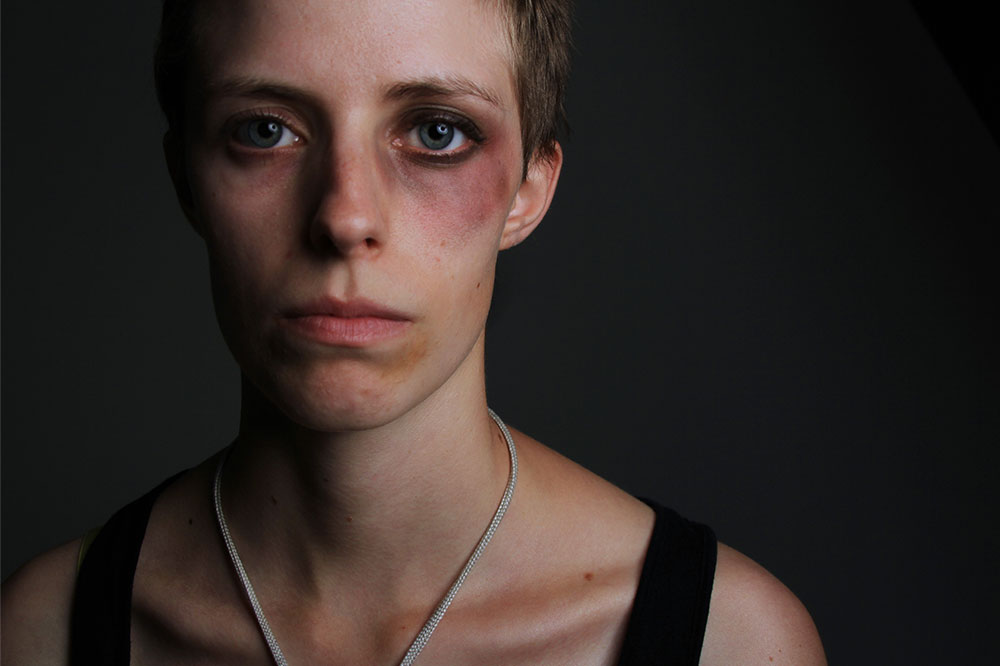
Black eye – Symptoms, causes, and management options
A black eye is a bruise caused by bleeding in tiny blood vessels in the skin surrounding the eye. The vast majority of black eye injuries are minor. A black eye could suggest something more catastrophic, such as an internal eye injury or a fracture of the fragile ocular bones. If one experiences double vision, bruising around both eyes or nose bleeding, one may need to consult a doctor for a skull injury.
Symptoms and effects of black eye
If a person sustains an injury to the area around their eye, they may develop edema. When the swelling spreads, the color of the skin will change. First, it will begin red and gradually fade to a deep blue, violet, and possibly black color.
It is possible to experience constant discomfort around the eye or pain only when the affected area is touched. On rare occasions, the eye will develop a red patch. This is because there has been a subconjunctival hemorrhage.
The swelling will subside within a few days, and the discoloration will disappear. The dark hues gradually change from dark blue, violet, or black to yellowish-green over a few days. However, during this time, one may experience other symptoms, such as vision problems and primarily blurriness. A black eye usually fades in one to two weeks and does not necessitate medical attention.
Causes of black eye
An injury to the face or the eyes is the main cause of the black eye. It ruptures the blood vessels under the skin leading to bruise formation. However, the black eye could be caused by other factors like ongoing treatment for an underlying condition or other health issues. Here goes our list of a few of the prominent causes of the black eye:
Eye infection
Infections like stye or conjunctivitis can also lead to discoloration or swelling around the eye.
Physical trauma
A black eye can be caused by physical trauma to the head or the face due to a fall, blow, or punch. Such injury ruptures the blood vessels under the skin, resulting in discoloration and bruising.
Blood thinners
Blood thinners increase a person’s risk of developing a black eye. It makes the blood vessels fragile and susceptible to rupture when subjected to trauma.
How is a black eye diagnosed?
A doctor will undertake a physical evaluation, ask about the incident, examine for any further injuries or symptoms of the black eye, and perform a physical exam. In addition, the doctor will examine the patient’s eye movements and the facial bones surrounding the patient’s eye. If the doctor finds a fracture in the bones of the face or around the eye, or if something is inside the eye, they may order more testing, such as an X-ray or a CT scan.
Treatment for a black eye
There is no overnight cure for a black eye that works like magic. But certain natural cures may accelerate the healing process. However, a doctor’s examination of the eye is necessary before beginning any treatment. The following are some of the best remedies for a black eye:
Cold compress
Immediately after an injury, lowering the temperature in the region around the eye with a cold object, a chilled spoon, or a bag of food will help relieve the damage. For the first 24 hours following the accident, apply it for 15 to 20 minutes and repeat it as frequently as once per hour.
Warm compress
One can move to a warm compress a day or two after using a cold compress. It facilitates healing by accelerating blood flow.
Massage the area
In the next few days, gently massage the area around the bruise. It speeds up healing by stimulating the lymphatic system close to the bruise.
Eat pineapple
Pineapples are rich in various nutrients that have multiple health benefits. It also contains enzymes that lower inflammation and help heal the condition.
Vitamin C
Vitamin C supports healthy blood vessel function and accelerates healing. Researchers claim that vitamin C promotes blood clotting, which lessens swelling and bruising.
Conclusion
Head or face injuries frequently result in black eyes. In addition, small blood vessels break, causing visible bruising around the eye. Black eyes usually recover on their own. One can accelerate the healing process using ice, anti-inflammatory therapies, certain herbs, and suggested supplements. If one needs it to be gone immediately, one can go to a dermatologist for laser therapy. A black eye is sometimes a sign of a more severe injury. Look for any concerning or worsening symptoms and consult a healthcare provider when needed.




